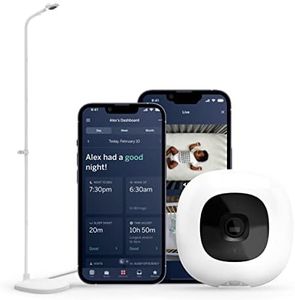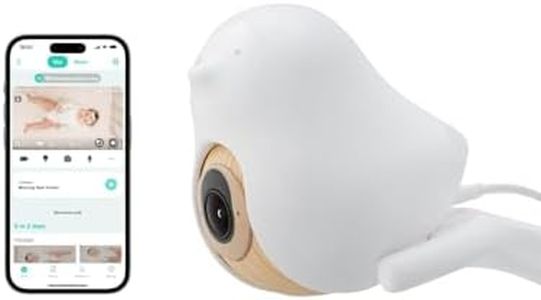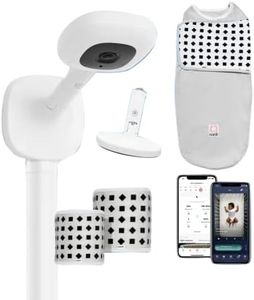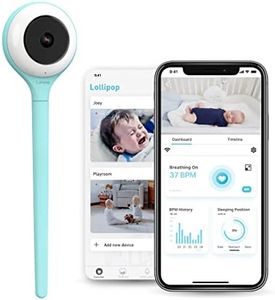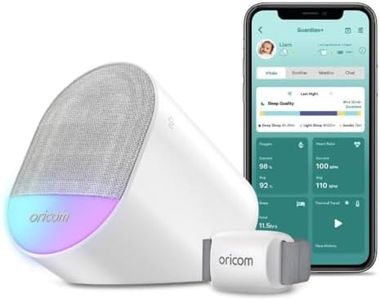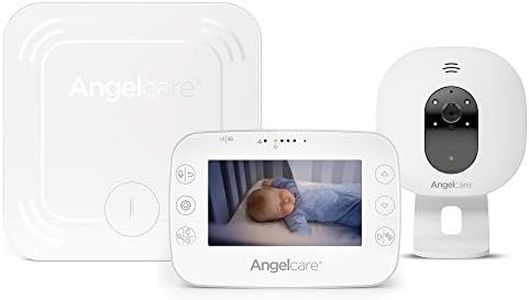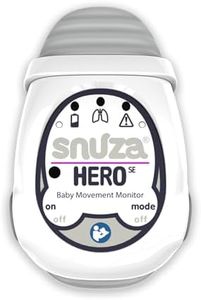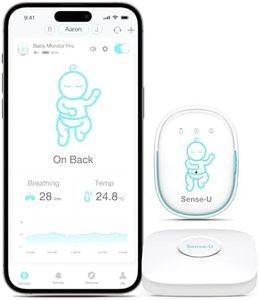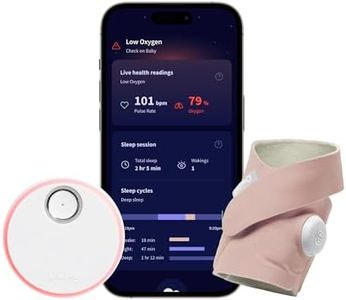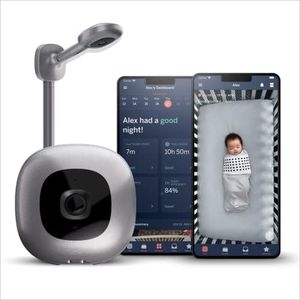We Use CookiesWe use cookies to enhance the security, performance,
functionality and for analytical and promotional activities. By continuing to browse this site you
are agreeing to our privacy policy
10 Best Baby Breathing Monitors
From leading brands and best sellers available on the web.Buying Guide for the Best Baby Breathing Monitors
Choosing a baby-breathing monitor can be an emotional journey, as every parent wants to ensure their baby's safety and peace of mind while their little one sleeps. When shopping for a baby-breathing monitor, it’s important to focus on how these devices detect and alert you to changes in your baby's breathing. Start by thinking about where and how you want to use the monitor, whether it’s for the crib, bassinet, or while travelling. Your comfort with technology and how much information you want from the monitor can also help guide your decision. Always remember, a monitor is a support tool and not a medical device, so it's important to still check on your baby regularly.Type of MonitorThere are different types of baby-breathing monitors, including wearable monitors that attach to your baby (like a sock or clip), under-the-mattress sensor pads, and camera-based systems that use video and computer vision. Wearable monitors track movement and sometimes oxygen levels directly on the baby, while sensor pads go under the mattress and detect movement from below. Camera-based monitors provide visual as well as data-driven monitoring. Consider what suits your baby's habits and your lifestyle; active babies may move off mats, while some parents prefer not to attach anything to their child. If you want a hands-off approach, a camera-based system might be preferable, while parents seeking real-time health metrics might favor wearables.
Detection TechnologyThis refers to how the device actually senses your baby's breathing or movement. Some monitors use motion sensors, pulse oximetry (measuring oxygen saturation), or advanced video analytics. Motion sensors detect even slight movements, which works well for most babies but might trigger false alarms if the child sleeps very still. Pulse oximetry offers more detailed health information but can be more complex. Video analytics can quietly track breathing without contact but may rely on a clear, unobstructed camera view. If you prefer simplicity and minimal setup, motion sensors are generally best; for those wanting extra peace of mind and health data, pulse oximetry may be worth the extra effort.
Alarm and Notification SystemA critical function of these monitors is alerting you if your baby's breathing slows or stops. Some devices have loud audible alarms in the room, while others send notifications to your phone or a parent unit. Decide whether you want immediate in-room alerts, silent phone notifications so you’re not startled awake for every minor event, or both. If you are anxious about missing an alert, choose a monitor with multiple notification options. If you’re a light sleeper or away from the baby's room often, smartphone notifications could be more effective.
Ease of Use & SetupThis covers how easy it is to get the device up and running and use it nightly. Wearables must be put on your baby for each sleep, while pads need proper placement under the mattress, and cameras must be positioned correctly. Consider how often you want to fuss with setup and whether you’re comfortable with basic tech. If you want quick, fuss-free use every night, look for simple, intuitive designs and clear instruction manuals.
Battery Life/Power SourcePower is essential for reliability. Some monitors are battery-operated, while others plug into the wall, and some come with rechargeable options. Battery-powered models offer flexibility and portability but require regular charge monitoring and replacement. Plug-in models don’t run out of power but are less portable and need to be near an outlet. If you travel often or want a monitor for naps everywhere, robust battery life is ideal. For stationary use in a nursery, a wall-powered or long-life battery model works well.
Data Monitoring & HistoryAdvanced monitors can display trends, logs of breathing events, and even health metrics over time via apps or displays. This lets parents observe patterns and share recorded data with healthcare providers if needed. If you want detailed insights and like tracking your baby’s nightly stats, opt for a monitor that saves and presents this data. If you just want real-time peace of mind, a basic alert system without historical tracking may be sufficient.
Comfort & SafetyFor wearable monitors, comfort is key—especially if your baby is sensitive or moves a lot during sleep. Devices should be made from gentle materials and be designed to stay put without pinching or causing discomfort. Non-wearable monitors must be installed securely to avoid disturbing sleep or posing any other safety risks. Always check for devices that follow safety standards and come with clear usage guidelines. If comfort is your top priority (especially for sensitive skin or restless sleepers), carefully consider wearable options and their materials.
